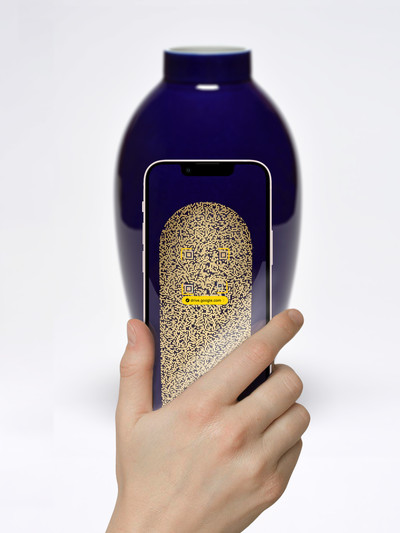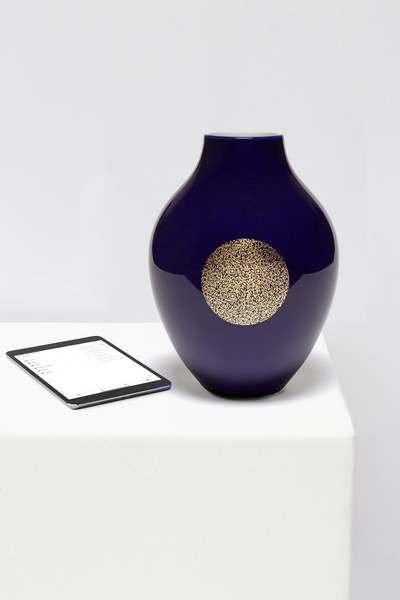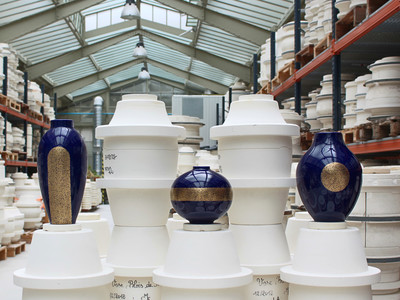“Data vases” par Claire Pondard & Léa Pereyre
Like the expertise preserved and passed on by the craftspeople of the Manufacture de Sèvres, individual memories and experiences are a legacy that circulates from one person to another. The invisible assimilation process of these techniques represents the element that makes it possible to design objects whose value goes beyond the material they are made of.
Similarly, memory is created and exchanged through shared experiences. However, most of today’s personal memories are stored as digital data. Memories therefore experience a more volatile life than craftsmanship, since the media that preserve them are generally almost ordinary objects that contain nothing poetic but the stories that imbued them. Although this technology makes it possible to save a hitherto unimaginable amount of information and details about lived experience, the essential subjectivity of their depositary becomes difficult to capture in the mass of material. Hard drives are hidden and rarely passed on with pride.
The Data Vases, the fruit of a collaboration between Léa Pereyre, Claire Pondard and the Manufacture de Sèvres, invite us to rediscover the materiality of the traces of our lives and to pass them on to our descendants. This is how the decorative elements of a series of vases from the Manufacture’s repertory, produced in unusual contexts, were conceived. A uniform layer of timeless Sèvres blue and a gold QR code cover the surface of these vessels. Like the Greek amphorae illustrated with stories – historical, legendary, mythological, or intimate – these containers reveal the memories they are filled with, with the intention of storing important knowledge. The three vases on display are filled with stories about the project that the audience is invited to enter.
These vases, intended to be preserved and passed on, bear witness to the inestimable value of the personal information they contain. Memories, whatever the medium (photographs, videos, texts, and music) are transformed into personal, family and heritage property. The fragility of the porcelain underlines just how vulnerable its content is. Breaking the vase would spill the content, accumulated with passion over a lifetime. In addition, the possibility of interacting with these vases, both through the code to scan and the platforms to which they refer – the most popular at the moment – makes these objects manifestos about our relationship to our data, since their durability is uncertain. Without offering a solution, the vases contribute to fundamental debates about the sustainability
of collective knowledge. This content, the result of a sorting process whose nature is to serve
the image of its subject, questions the moral value with which digital archives are approached. Transmitted by inheritance, these vases will nevertheless allow this memory to live on in contact with the intangible heritage embodied by their container.
Auguste Bertholet



